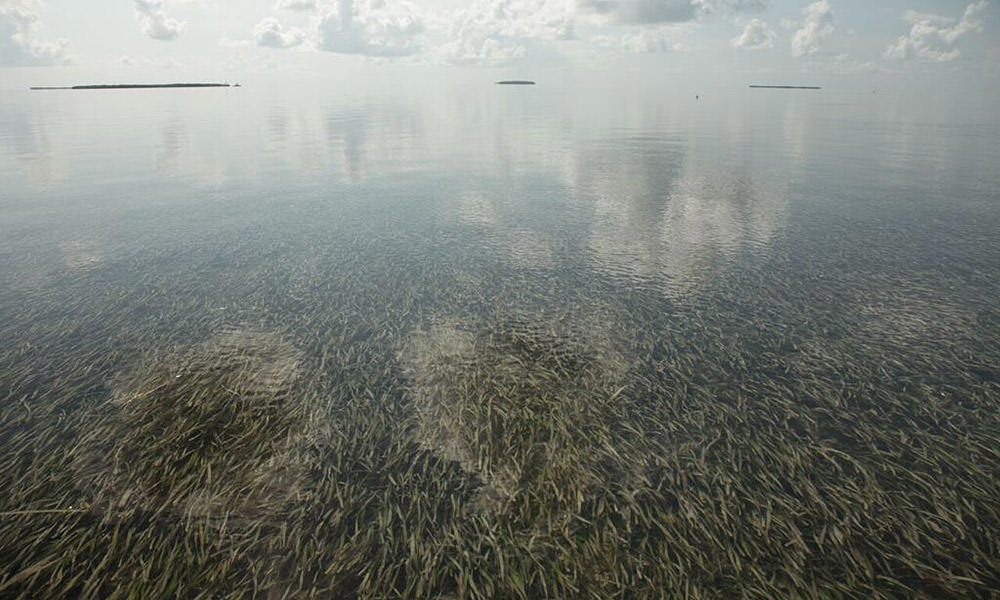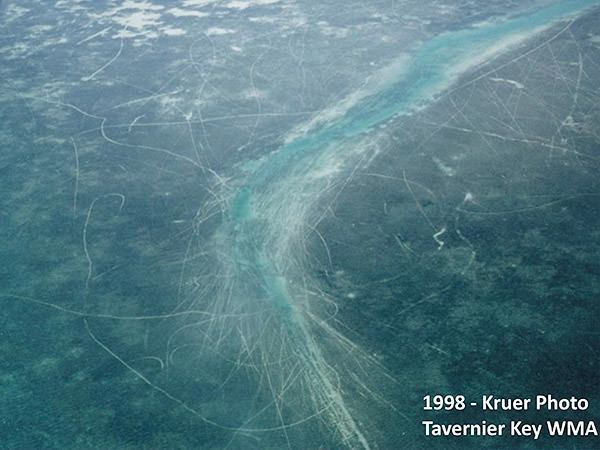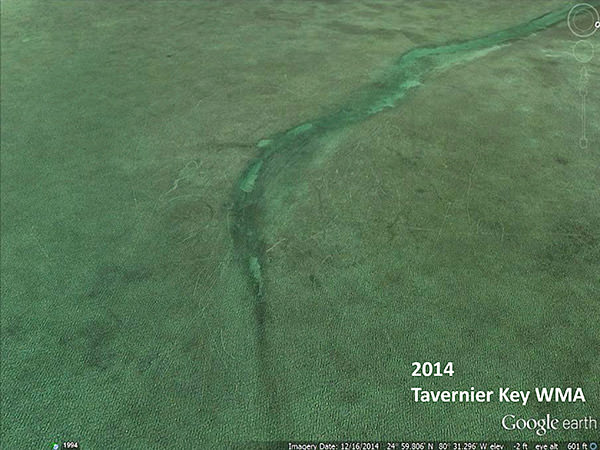Seagrass Meadow

The Florida Keys ecosystem includes 1.5 million acres of seagrass meadows, one of the world's largest contiguous seagrass habitats. Seagrass meadows are among the most productive habitats in the Florida Keys. Queen conch, Bahama sea stars, manatees, green sea turtles, and egrets are just a few of the many animals that rely on seagrasses. Protecting seagrass is a priority for the sanctuary.
What is Seagrass?
Seagrasses are flowering plants that reproduce both sexually and asexually. While they may look similar to the grasses found on land, they are not directly related.
Seagrasses grow in shallow, coastal waters where sunlight and nutrients are available for photosynthesis. For pollination, seagrasses rely on the movement of water as well as tiny crustaceans that carry sticky pollen grains on their backs, similar to how bees pollinate land-based plants. The plants are able to reproduce asexually through vegetative growth. Blades of seagrass grow from a horizontal stem (rhizome) that is buried under the sediment. As the rhizome grows, new shoots emerge vertically.

Seagrasses grow all around the world in tropical, temperate, and polar environments, except for Antarctica. There are around 72 known species of seagrass, and seven of them can be found in Florida's waters. The three types of seagrass that are most common in the Florida Keys are:
- Turtle Grass (Thalassia testudinum)
- Manatee Grass (Syringodium filiforme)
- Shoal Grass (Halodule wrightii)
Importance of Seagrass
Seagrasses are sediment stabilizers. Their underground rhizomes and roots keep the grass anchored and absorb nutrients. With a thick blanket of roots holding tight to grains of sand, seagrasses stabilize the ocean floor.
Seagrasses are filters. Seagrass blades slow the flow of water, allowing sediments and pollutants from land to fall out of the water column and settle onto the seafloor. The brilliant blue water you see on the coral reef is in part due to seagrasses. Corals need clear water that is low in nutrients to thrive, and nearby habitats such as seagrasses and mangroves help keep suspended sediment levels low and buffer out nutrients.

Seagrasses are essential fish habitat. Coral reefs, hardbottom, seagrass meadows, mud flats, and mangrove forests are all ecologically connected. Many commercially and recreationally important fish and invertebrates, such as drums, sea trout, and spiny lobster, rely on seagrasses during their juvenile stages of development before heading off to deeper waters.
Other wildlife that rely on seagrasses for habitat and foraging grounds include stone crabs, scallops, conches, sea stars, seahorses, stingrays, and nurse sharks. Some species are occasional or frequent visitors, while others live in seagrass habitats permanently. Queen conch are year-round dwellers, and lay their egg masses on seagrass blades. The emerald clingfish (Acyrtops beryllina) is a tiny fish that is only found associated with turtle grass blades.

Seagrasses are food. As primary producers, seagrasses are an important source of nutrition and part of the marine food web. Some animals that eat seagrass include manatees, green sea turtles, conches, and urchins.
Threats to Seagrass Habitats
Despite the valuable role that seagrass plays in the Florida Keys ecosystem, these plants are facing one particularly large threat: humans.
Seagrass beds have declined due to water quality degradation and through the direct loss of habitat related to dredging, coastal development, and boating impacts. Increased sea surface temperatures, reduced freshwater inputs, elevated salinity, and increased nutrients contribute to die-offs. More than 300 groundings are reported within Florida Keys National Marine Sanctuary each year, with nearly 80% of these incidents impacting seagrass habitat. Many more groundings go unreported.


Propellers have scarred many seagrass meadows in South Florida. When a boat's propeller hits seagrass, it makes a cut that can become wider and deeper as water moves through it. Over time, the entire meadow, and the animals that call it home, can be lost. Seagrass restoration is a priority in Florida Keys National Marine Sanctuary.
Even with restoration, seagrass scars can take years to decades to recover. Prevention is the best way to protect seagrass meadows. Boaters can help by avoiding seagrass, trimming your motor up in shallow water, and if you get stuck, make sure to push your boat off the flat. Using your motor to power off a flat will cause more damage.
For more information about seagrasses monitoring within the sanctuary, read the Seagrass Monitoring Project Science Summary and Seagrass Meadows and Nutrients Science Summary.
Florida Fish and Wildlife maintains a GIS data set of seagrass mapping in Florida.

